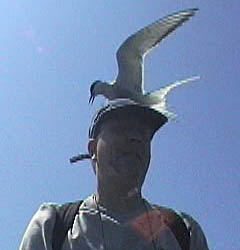I have done this for the last 4 or 5 years, although I've never bothered to keep a record of what I saw in past years, so I'm not sure exactly how this year compares. I know the 10 house sparrows this year was a record, and hopefully this is due at least in part to our own breeding birds (see my very first post).
Blue tits were second at 5 and again this is, I'm sure, an improvement. Also reassuring to see greenfinch still there despite the trichomoniasis outbreaks last year, although I'm sure 4 is down on past years. For me the highlight was our blackcaps - I'm getting nearer some decent pic's, especially of the male who has taken up residence in a euphorbia, but so far they've largely been shots though the window which isn't great (even though it did prompt me to clean the windows!)
Meanwhile a trip back to seek hawfinch proved unsuccessful, although I did get my best ever scope views of a green woodpecker - albeit to brief to get any snaps.
It was good to see the first signs of new growth in the woods with cuckoo pint shoots emerging, including a few of the spotted brand.
Also delighted that my new fungi book allowed me to name these colourful little chaps as scarlet elfcups. What evocative names some of these things have (even if a little cutesy).














.jpg)














